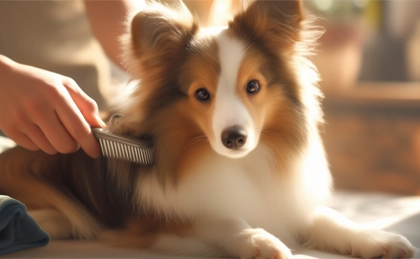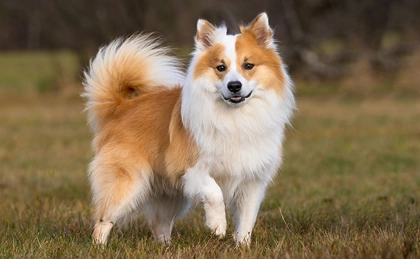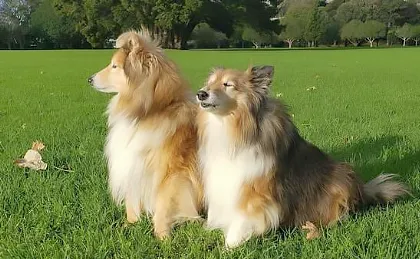
Our model Sheltie, Howard, as a puppy vs an adult.
What do Sheltie puppies look like as they grow up? From tiny newborns to majestic double-coated adults, Shelties go through some fascinating transformations as they develop. Follow along as we explore the growth stages of Shetland Sheepdogs, along with surprising facts, tidbits, and plenty of adorable pictures.
The Neonatal Stage (0-2 Weeks)
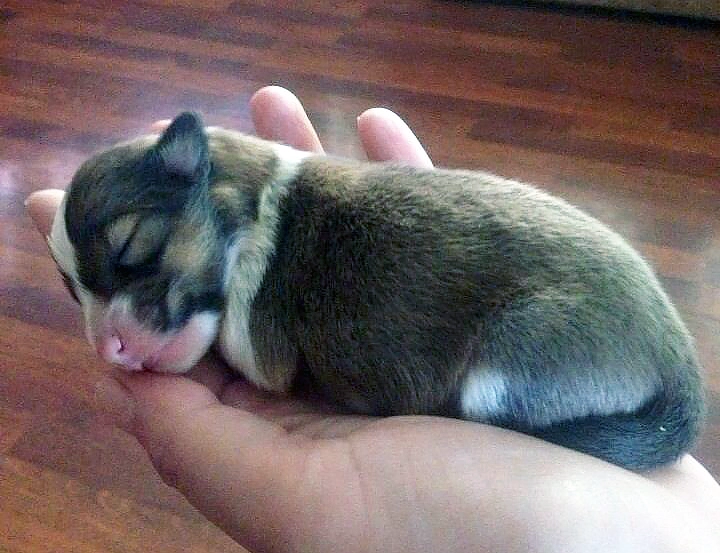
A newborn Sheltie.
At birth, Sheltie puppies are like large fuzzy jellybeans. Despite developing in the womb for just nine weeks, they emerge remarkably complete, except for a few crucial missing features: their eyes and ears are still sealed shut, leaving them in a world of touch and scent alone.
A newborn Sheltie's first sensory experience is being licked clean by its mother, which also stimulates their first pee and poop.
Without a thick coat, these delicate pups rely on huddling together for warmth. Their cries are rare, so if you hear one whining, something's probably wrong. Hypothermia is a real danger at this stage and it's vital that breeders keep the puppy enclosure warm and free of drafts.
In the first week, Sheltie puppies do little more than sleep and nurse, causing them to double their weight within days. They're still too weak to stand though, so they wiggle around using their legs, a movement known as creeping. Between 5-8 days old, their ears begin opening, granting their first exposure to sound. Their eyes take longer to open, anywhere from 8-14 days, revealing baby blue eyes that will develop to their adult color later.

Neonatal Shelties are tiny and helpless.
The Transitional Stage (2-4 Weeks)
By 2 weeks old, Sheltie puppies begin experiencing the world in new ways. Their legs strengthen, and by 3 weeks, they take their first wobbly steps. They also start interacting with their littermates and experiment with play-fighting and tail-wagging. Puppies are born without teeth but by 3 weeks old, those tiny needle-sharp puppy teeth start popping in and they make their first attempts at chewing.
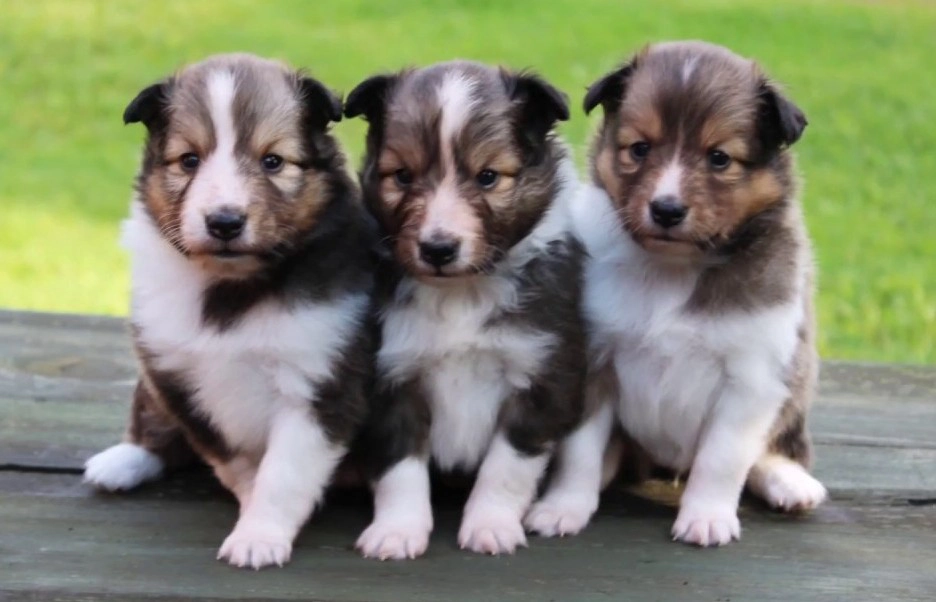
At 4 weeks olds, puppies are discovering the world.
At this stage, puppies begin pooping away from their sleeping area. That may not sound like much, but in the puppy world, this is a huge win. It marks the beginning of their natural instinct to keep their den clean; a crucial first step toward house training. As their coordination improves, they start toddling away from their nest to relieve themselves, setting the foundation for good potty habits in the future.
As they grow more confident, Sheltie puppies become increasingly curious, exploring their surroundings with their developing senses. Their mother still plays a crucial role, guiding them through their first interactions and keeping them in check.
The Socialization Stage (4 to 10 Weeks)
During the socialization stage stage, puppies develop crucial social skills. They engage in mock battles with their littermates, teaching them how to control their bite; a skill known as bite inhibition. If a puppy bites too hard, their sibling yelps and stops playing, teaching them a valuable lesson about the need to be gentle.
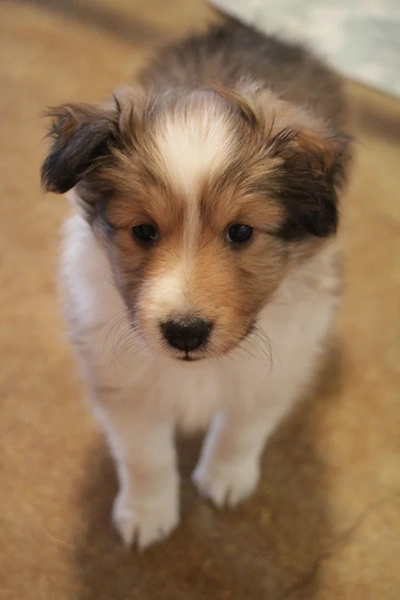
This 6-week-old puppy is developing social skills.
By 6 weeks, puppies are fully weaned and eating solid food. They're also incredibly curious and fearless in this critical socialization period. Puppies interact with a variety of people, sounds, and experiences during this stage to grow into well-adjusted adults.
Puppies thrive on positive reinforcement. A simple "sit" command followed by a tasty treat goes a long way in establishing good behavior early on.
By 8 weeks, Shelties are ready to leave their litter and bond with their human families. At this point, they begin developing a fear response, so proper socialization is crucial to build confidence. Puppies that lack socialization during this stage may develop lifelong shyness or fear-based aggression. It's important to learn how to socialize a Sheltie whether you're working with a puppy or adult dog.
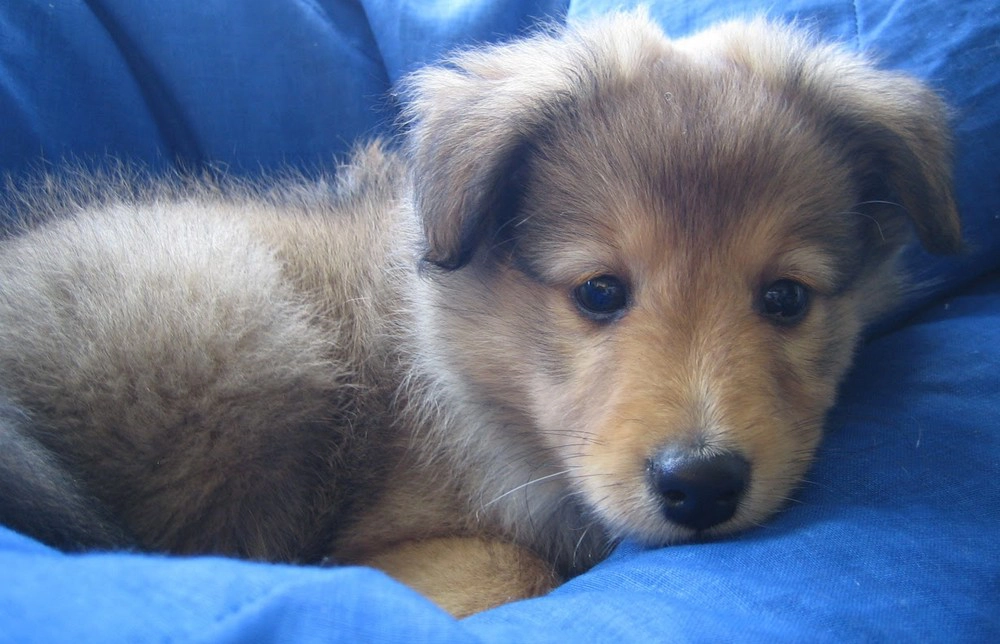
At 8 weeks old, Sheltie puppies are ready to meet their human families.
The Jeuvenile Stage (3-6 Months)
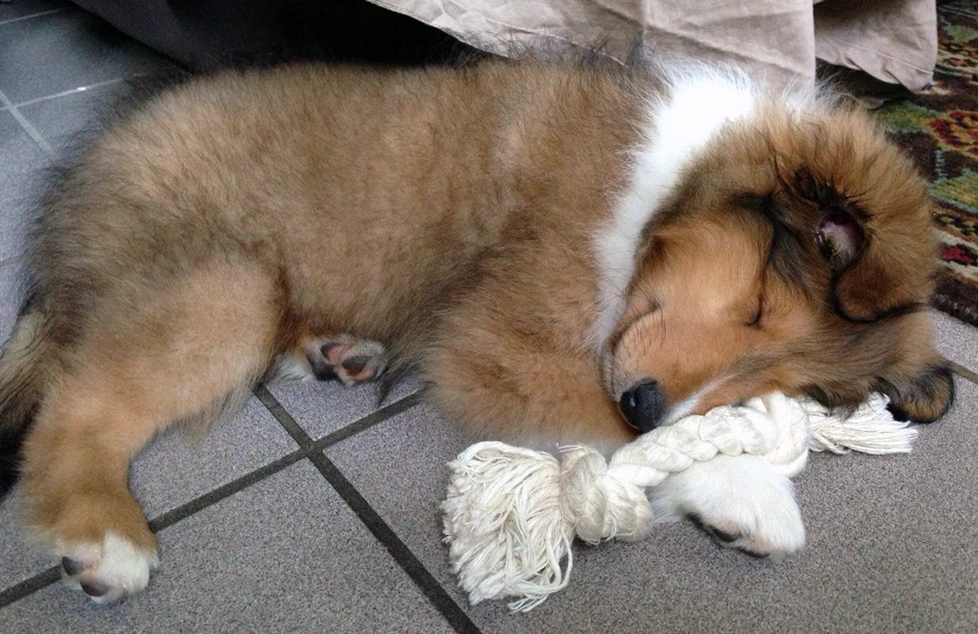
A Sheltie puppy at 3 months old settled into their new family home.
This is Sheltie puppy adolescence: rambunctious, playful, and just a little rebellious. They continue to refine their social skills and begin understanding dominance and submission. In the jeuvenile stage, they look hilariously awkward—all legs and ears—to resemble gangly little coyotes before their double coat grows in. Their energy levels are high, so consistent training and structured playtime are essential.

From 4 months old, Shelties are ready for outdoor potty training.
Shelties go through a major coat transformation at 5-6 months. Their puppy fluff is replaced by an impressive double coat, which continues thickening into adulthood. Grooming becomes essential for a healthy Sheltie coat.
Once your Sheltie puppy is 4 months old, you can transition them to outdoor toileting. They now have the physical bladder control and mental capacity to take themselves to a spot that's out-of-smell and out-of-mind. Learn all the basics of indoor and outdoor housetraining for puppies.
The Adolescent Stage (6-12 Months)
Shelties now resemble adults but still act like energetic, mischievous puppies. Their intelligence shines, making them highly trainable, but also prone to testing boundaries. Ranked as the 6th most intelligent dog breed, Shelties are quick learners. They thrive on mental stimulation, excelling in activities like agility training and advanced obedience.
Male Shelties experience a surge of testosterone, which can lead to dominant behavior. Neutering your male Sheltie before one year old helps curb these hormonal-driven tendencies. Spaying your female Sheltie also has health benefits, besides helping to prevent the issue of dog overpopulation. Meanwhile, with a teenage dog in the home, consistent reinforcement of commands and firm house rules set the stage for a well-mannered adult dog.
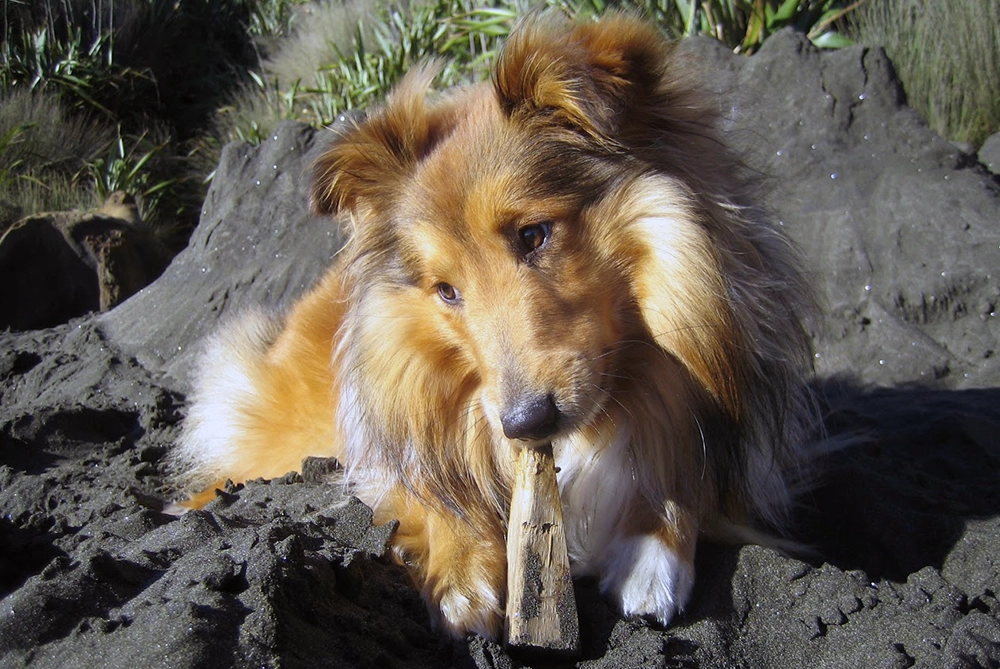
Our Sheltie Howard enjoying the beach at 11 months old.
The Adult Stage (12+ Months)
By 12-18 months, your Sheltie is a fully grown adult sporting that iconic, luxurious coat. Their personality is well-developed, typically playful, loyal, affectionate, and independent. While they're no longer a wild little puppy, your Sheltie remains energetic and requires daily exercise, mental stimulation, and, of course, plenty of snuggles. Their coat requires weekly grooming to prevent matting and house-wide shedding.
Thinking about getting a Sheltie? Browse our listings of Sheltie puppy breeders in your country or find a local Sheltie rescue. If you go the puppy route, ensure you understand the requirements of housebreaking a Sheltie and what you need for a new puppy.

Still chewing: Howard finds a tasty beach stick at 18 months old.



